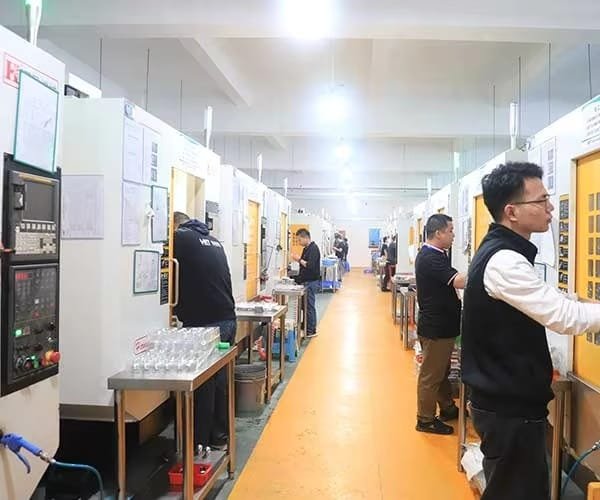Turning and milling are two rather crucial machining processes applied in production somewhat widely. Both methods are required for producing metal and other raw materials well, although they differ substantially in approach, objective, and ideal applications multi point cutting tool. Knowing the differences between milling and turning will help manufacturers increase output efficiency, improve product quality, and cut costs.
What is Milling?

Milling in machining is the process of revolving cutting tools removes material from a stationary workpiece. Milling machines and milling tools are flexible and able to produce exact features and complex forms. Moving the cutting tool in many directions lets many design choices across the workpiece.
Types of Milling Operations
- Face milling applied to provide a level top surface on a workpiece Common for flattening surfaces and ensuring constant dimensions over a piece is this method. Face milling is best when designing surfaces requiring perfect finishing.
- In the process of peripheral milling, also known as slab milling, the cutting tool is used to make cuts along the side of the material, so generating the margins of the workpiece that are visible from the outside. For larger machined things needing precise outlines, this method is ideal.
- Perfect for end milling polished curves, slots, and pockets is End milling is necessary to create complex designs and bespoke profiles in complicated items.
- Perfect profiles are generated from especially cutters in gear milling. This method is extremely necessary for the manufacturing of gear components in the equipment and automotive industries.
- Common in manufacturing of precision tools and mold-making, angular milling produces angular cuts.
- Usually utilized in the aerospace industry, form milling is ideal for creating irregular features like grooves and curves.
Milling Machine Types
- Vertical Milling Machine: A vertical milling machine allows the spindle to be positioned vertically, which improves vision and control for activities such as face milling and slot cutting which are performed by the machine.
- Features a horizontally aligned spindle, horizontal milling machines are ideal for heavy-duty tasks and deeper cuts.
- A computer numerical control (CNC) milling machine is a type of milling machine that uses programmed instructions to perform precision machining. This type of equipment improves both consistency and efficiency.
Advantages of Milling
- Extreme flexible for creating intricate shapes and precise patterns.
- Excellent for working on multiple planes at the same time.
- produces perfect, exceptional finishes.
- Lower human error and more efficiency are guaranteed by automation made available by CNC milling machines.
Disadvantages of Milling
- Being slower than turning can be the case for cylindrical parts.
- Usually asks for more tool adjustments for complex shapes.
- Milling machines could demand longer setup periods for some difficult operations.
What is Turning?

A stationary cutting tool is used to remove material from a workpiece while the workpiece rotates. This process is referred to as turning in the field of machining high quality components. Especially for producing conical and cylindrical structures, this method is rather effective. For round items, lathes offer excellent accuracy and efficiency; so, turning operations are done with them.
Types of Turning Operations
- Gradually reducing the diameter throughout the workpiece’s length produces a smooth cylindrical shape.
- Taper turning gently lowers the diameter to produce conical portions. Parts like shafts and connecting rods would find ideal fit.
- Usually used to cut threads into the material, thread turning is mostly seen in fasteners like bolts and screws.
- The term “facing” refers to a flat surface that is generated on the end of the workpiece. This specific surface is designed to assure consistency and accuracy.
- Common in engine cylinder and pipe fitting construction, boring is a technique used to expand a hole already in use.
- Grooming is the technique of carving a groove into a material, and it is most commonly utilized in the production of grooves for O-rings.
Types of Lathes Used in Turning
- Engine lathe is ideal for general-use turning under hand control.
- Designed for repeated production runs and quick tooling changes, turret lathe
- The CNC Lathe is a machine that allows for the automation of mass manufacturing as well as the control of precise turning.
Advantages of Turning
- rather good for cylindrical part production.
- Gets excellent surface polish with minimal effort needed.
- CNC turning helps to automate to increase output.
- Basic tools for basic components.
Disadvantages of Turning
- limited to symmetric or spherical parts.
- For challenging geometry, might call for many setups.
- Less suited than milling for intricate multidimensional designs.
Key Differences Between Milling and Turning
| Aspect | Milling | Turning |
| Process Type | Cutting tool rotates | Workpiece rotates |
| Material Removal | Multi-directional | Linear, along the workpiece’s axis |
| Best for | Complex shapes, flat surfaces | Cylindrical parts |
| Machine Type | Milling machine | Lathe |
| Cutting Tool Motion | Moves in various directions | Stationary (or minor movement) |
Applications of Milling
Milling is an ideal method for production.
- precise cuts and curves on engine parts.
- complex machinery parts used in many different fields.
- prototypes with intricate testing and development designs.
- For mold and die work, components require complex profiles and patterns.
- Aerospace components with great dependability and accuracy.
Applications of Turning
Turning is appropriate for:
- Applied in both industrial and automobile machinery are shafts and axles.
- Fasteners and threads designed for accurate diameter control.
- Round sections requiring outstanding dimensional accuracy.
- pipes fitted to withstand pressure and valves designed this way.
- Tools especially designed for a given job.
Choosing Between Milling and Turning
The right machining method depends on several factors:
- The shape of the part: milling is more effective when dealing with complex forms cnc turning centers, whereas turning is most effective when dealing with round or cylindrical pieces cnc milling operations.
- Turning efficiently cuts hard metal; milling could be superior for softer materials.
- Turning typically results in faster production speeds for simple cylindrical items.
- Although both methods produce excellent accuracy, milling allows more leeway for minute details.
- For demanding applications, CNC milling machines offer better capabilities even if they are usually more expensive.
Combining Milling and Turning
Many modern CNC machines integrate milling and turning capabilities, therefore allowing producers to produce complex parts in one configuration cnc milling processes. This integration speeds up efficiency, reduces setup time, and improves general accuracy. Hybrid CNC machines have been accepted widely by industries seeking accuracy and speed for various manufacturing processes and uses cnc turning machines.
Conclusion
Turning and milling are fairly significant in the manufacturing sector. Knowing their differences, advantages, and applications enables businesses to choose the optimal strategy for their production needs desired shape. Though milling excels in the precision parts making intricate shapes, turning is unmatched in its ability to produce perfect cylindrical pieces. Combining these techniques will enable manufacturers to achieve best efficiency and offer accurately and regularly high-quality products.

